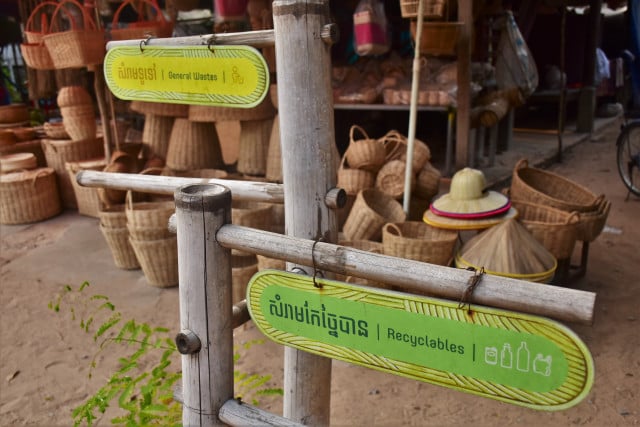The Taste of Life or the Taste of Food?

- Ky Chamna
- October 28, 2020 7:42 AM
Perspectives. It all comes down to this word of abstraction. A word that is harder to feel than to just imagine. This is one of the many words in which value is defined based on times and places. A very personal judgment that is usually misunderstood, and misinterpreted. A judgment that defines and prioritizes taste, both physically and emotionally. The taste of life and the taste of food.
What is more important? Is it the luxurious vehicles, the decorative wooden furniture, the new cutting-edge electronic devices or simply the nutritiously digestible food that our stomach needs? The simplest answer might be “It depends.”
This kind of answer is highly debatable in the sense of its social meaning. Why? It is because people feel differently. However, to find a better answer, we have to establish a common ground of ideas and feelings. Something that the majority of people somehow have in common in relation to their biology and their social environment.
As societies develop, the standard of living also starts to change. From fundamental life-sustaining necessities such as food, water, clothes, medicines and shelters, the ladder of demand continues to go upward. At this point, many people start to question themselves about what could add more value into their lives. However, in a realistic world, not all nations develop at the same rate at the same time. Not even within its own society itself. These differences in development define what each and every group of people needs.
In order to clearly express the definition, let us take “wooden materials” as examples. Woods or wooden materials like wooden furniture or wooden sculptures have been increasingly becoming more valuable in the present day. As deforestation still remains a controversial issue and population keeps on expanding with the upward shift in the standard of living, naturally grown materials like woods – especially the ones which can be found in the tropical climate – have been at the center of demand.
Unlike gold, diamond or any other gemstones, wooden materials were once alive. Old gentle living sky-towering giants of the dense tropical forests. Living members of the jungles, which many other organisms big and small or even microscopic call home for millions of years. The irregularity in its structural growth has become an artwork for many human beings. The twisted branches and the curvy leaves exhibit a sense of organic life. This is some of the aspects which give wood its undebatable benefits.
Because of this, wooden materials have become increasingly rare objects, which are usually associated with the luxurious taste of life. In many hotels and restaurants across the tropical regions, wood can be considered to be the main display. Large wooden tables and chairs full of elaborative sculptures as large as or even larger than a human being. Enormous pieces of wood cover vast areas of the building walls. Some car models also exhibit wooden composition onto their parts. It is a display of wealth and rarity.
From a practical standpoint, wood is not the sole material that can accomplish these requirements. Plastic, metal, stone and many other synthetic materials are highly capable of doing almost the same thing. Chairs and tables can be produced from plastics, forged from steels or even curved from stones. As long as it can bare the weight and hold the stuffs, it is already practical.
On the opposite side of the spectrum, the taste of food seems to be more an immediate demand for the less-fortunate people. Practicality seems to be preferred. Luxurious wooden materials seem not to be prioritized. Some financially-starved villagers who live in rural villages sell these precious woods away for the more-fortunate people at a very low price as long as they can acquire the taste of food. They need neither fancy wooden table to hold their cups and plates nor fancy chairs to assist their weight. All they need is to have something to digest at that moment.
These examples of wood are just small portions of the even bigger story in human society. This opinion has no intention to defame or denounce any ways of life. It is just a small representation of the differences put in some perspectives.
However, this small piece of opinion also encourages people to enjoy the practical aspects of life when it comes to using day-to-day materials. Minimize the usage of precious wood in order to reduce the effect of deforestation and many of its related consequences, which could have the potential to impact the environment.
It is understood that the taste of life for the more-fortunate people is quite crucial for them. However, wooden materials that sit in your house do almost nothing except entertaining your eyes and your guests’ eyes. But those woods, if they were to be healthily alive in the forests, they could do much more for the entirety of Planet Earth by producing vital Oxygen, capturing harmful Carbon Dioxide and sheltering billions or even trillions of other organisms of all shapes and sizes.
A wooden chair is more or less just a wooden chair. But a living tree, well… that is different.
Reconsider your taste. The taste of life could be more sustainable if practicality is somehow taken into account.















